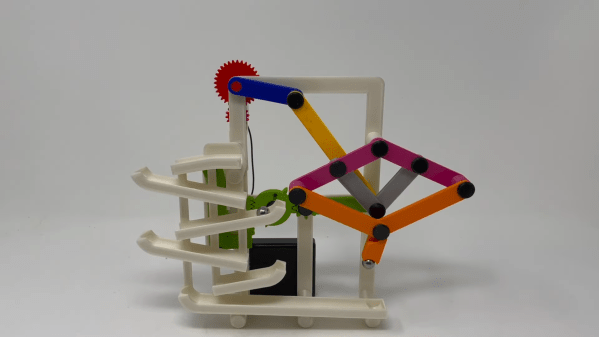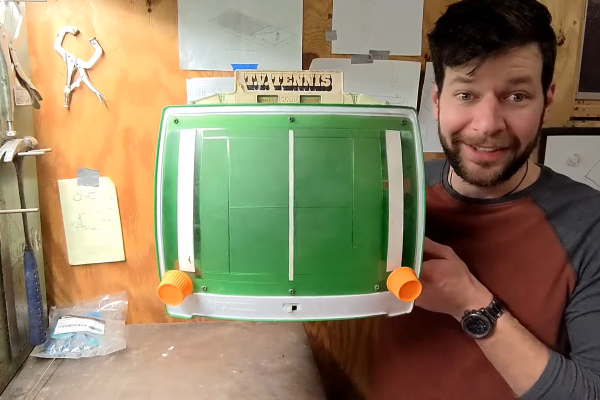Back near the beginning of the current Solar Cycle 25, we penned an article on what the whole deal is with solar cycles, and what could potentially lie in store for us as the eleven-year cycle of sunspot population developed. Although it doesn’t really come across in the article, we remember being somewhat pessimistic about things, thinking that Solar Cycle 25 would be somewhat of a bust in terms of increased solar activity, given that the new cycle was occurring along with other, longer-period cycles that tend to decrease solar output. Well, looks like we couldn’t have gotten that more wrong if we tried, since the Sun lashed out with a class X solar flare last week that really lit things up. The outburst came from a specific sunspot, number 3514, and clocked in at X2.8, the most powerful flare since just before the end of the previous solar cycle. To put that into perspective, X-class flares have a peak X-ray flux of 10-4 watts/m², which when you think about it is a lot of energy. The flare resulted in a strong radio blackout; pretty much everything below 30 MHz was unusable for a while.
linkages4 Articles
A 3D Printed Marble Run Features Neat Elevator Linkage
There’s seldom anything as joyful and relaxing to watch as a simple marble run. Of course, the thing about letting marbles fall under gravity is that you eventually need to lift them back up again. The Marblevator has a mechanism that does just that.
Overall, the build features a relatively simple marble run. It consists of just six 3D printed ramps which the marble tumbles down in just a few seconds. However, the real magic is in the mechanism that restores the marbles from the bottom of the run all the way back to the top.
A motor turns a gear, which then rotates a crank leading to a multi-link rhombus. On one corner of the rhombus is a small protrusion with a magnet attached, which picks up the marbles from the bottom of the run. As the mechanism turns, the rhombus shifts and brings the marble-carrying arm to the top of the marble run. There, it’s grabbed by another magnet, which holds the marble for a moment before letting it drop back down through the run.
It’s a simple project that nonetheless would make a brilliant desk toy. It’s also a great way to learn about linkage analysis and designing such systems on your own. If you’re big into marble runs, you might also consider procedurally generating them. Video after the break.
Continue reading “A 3D Printed Marble Run Features Neat Elevator Linkage”
Old School Mechanical Pong Still Amazes
[Tom], of the YouTube channel ThingsTomLike, found a very sweet little mechanical Pong clone at a thrift store. It came in broken, but in only fifteen minutes of your time, [Tom] manages a complete teardown and repair. (Video, embedded below.)
 The game works by balancing a lightbulb on the end of a pivot arm that projects a “ball” onto a screen, while players move their paddles up and down to hit the spring that surrounds the light assembly. The ball arm gets periodically kicked by a DC motor and cam assembly, which makes it careen wildly back and forth across the screen.
The game works by balancing a lightbulb on the end of a pivot arm that projects a “ball” onto a screen, while players move their paddles up and down to hit the spring that surrounds the light assembly. The ball arm gets periodically kicked by a DC motor and cam assembly, which makes it careen wildly back and forth across the screen.
It’s a marvel of simple, no-IC engineering. Ironically, it might have been cheaper than making it out of silicon at the time, but viewed from today’s economy, just the human labor in adjusting that counterweight so that the “ball” floats would blow the budget.
Why a screen and lightbulb? Because it’s emulating Pong, a video game, the new kid on the block. But even 45 years later, we think it has got a charm all of its own that the cold digital logic of Pong lacks, even if the gameplay suffers.
Keynote Video: Jeremy Fielding Wants To Help You Get Moving
For many DIY hardware projects, the most movement it’s likely to see is when we pick the assembled unit up off the workbench and carry it to wherever it’s destined to spend the rest of its functional life. From weather sensors to smart mirrors, there’s a huge array of devices that don’t need to move one millimeter to function. But eventually, you’re likely to run into a project that’s a bit more dynamic. Maybe you’d like to motorize your window shades, or go all out and build a remote controlled rover. With these more active designs comes a whole slew of new problems you may never have encountered before.
Luckily for us, folks like Jeremy Fielding are out there and willing to share their knowledge. In his fascinating presentation for the 2021 Hackaday Remoticon, Building Hardware that Moves: the Fundamentals that Everyone Should Know, he took viewers on a whirlwind tour of what he’s learned about designing and building complex machines from his years of professional experience. Whether its a relatively simple articulated workbench for the shop, a gargantuan earthmoving machine, or a high-dexterity robotic arm, each project he’s worked on has presented unique challenges that needed to be solved.

A lot of the projects that Jeremy has worked on are on a much larger scale than what your average hobbyist is ever going to run into. When there’s an arrow pointing out the tiny human in a picture of you and the machine you’re currently working on, you know things are getting serious. But as anyone who’s watched his YouTube videos knows, he’s got a real knack for taking these high-level concepts and distilling them into something more digestible for the home gamer.
Continue reading “Keynote Video: Jeremy Fielding Wants To Help You Get Moving”













